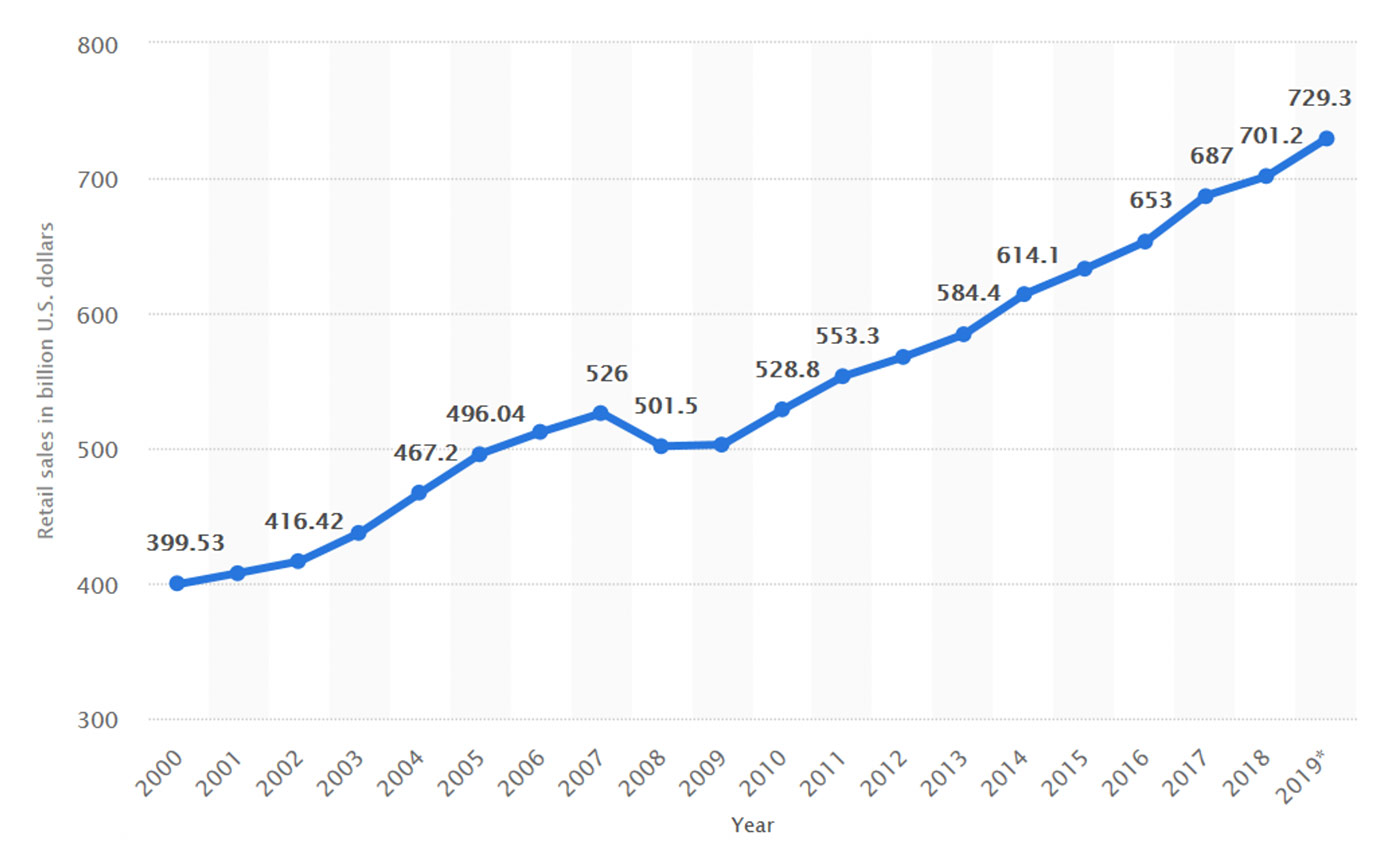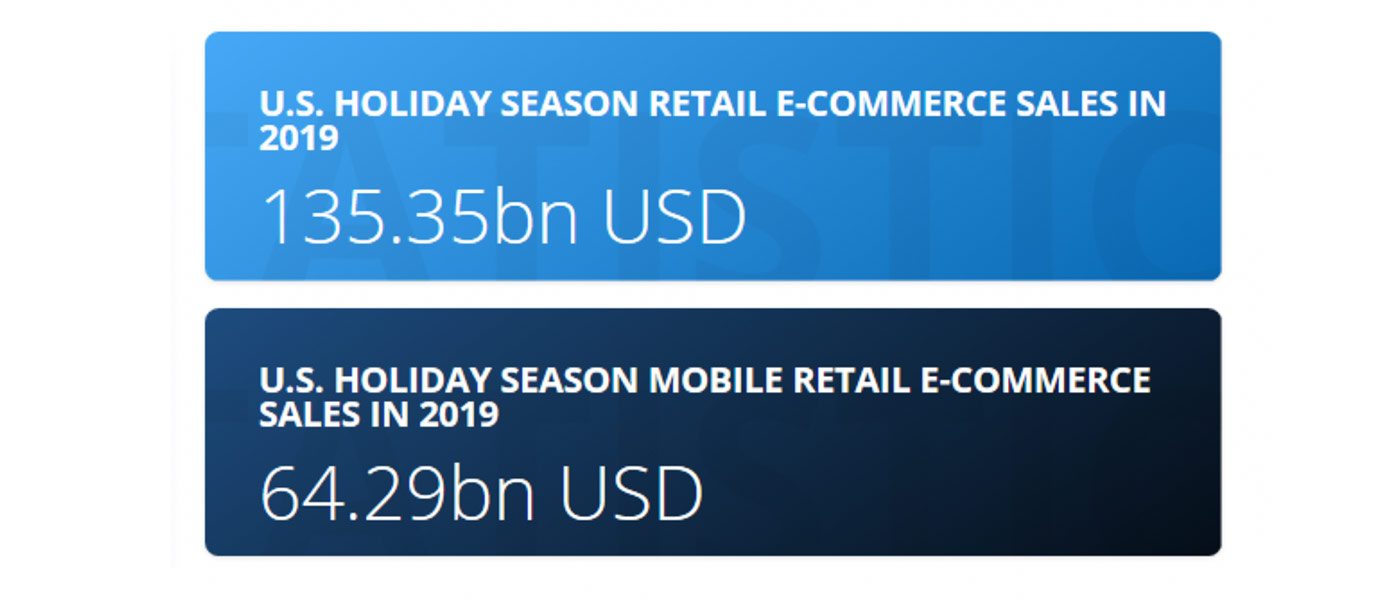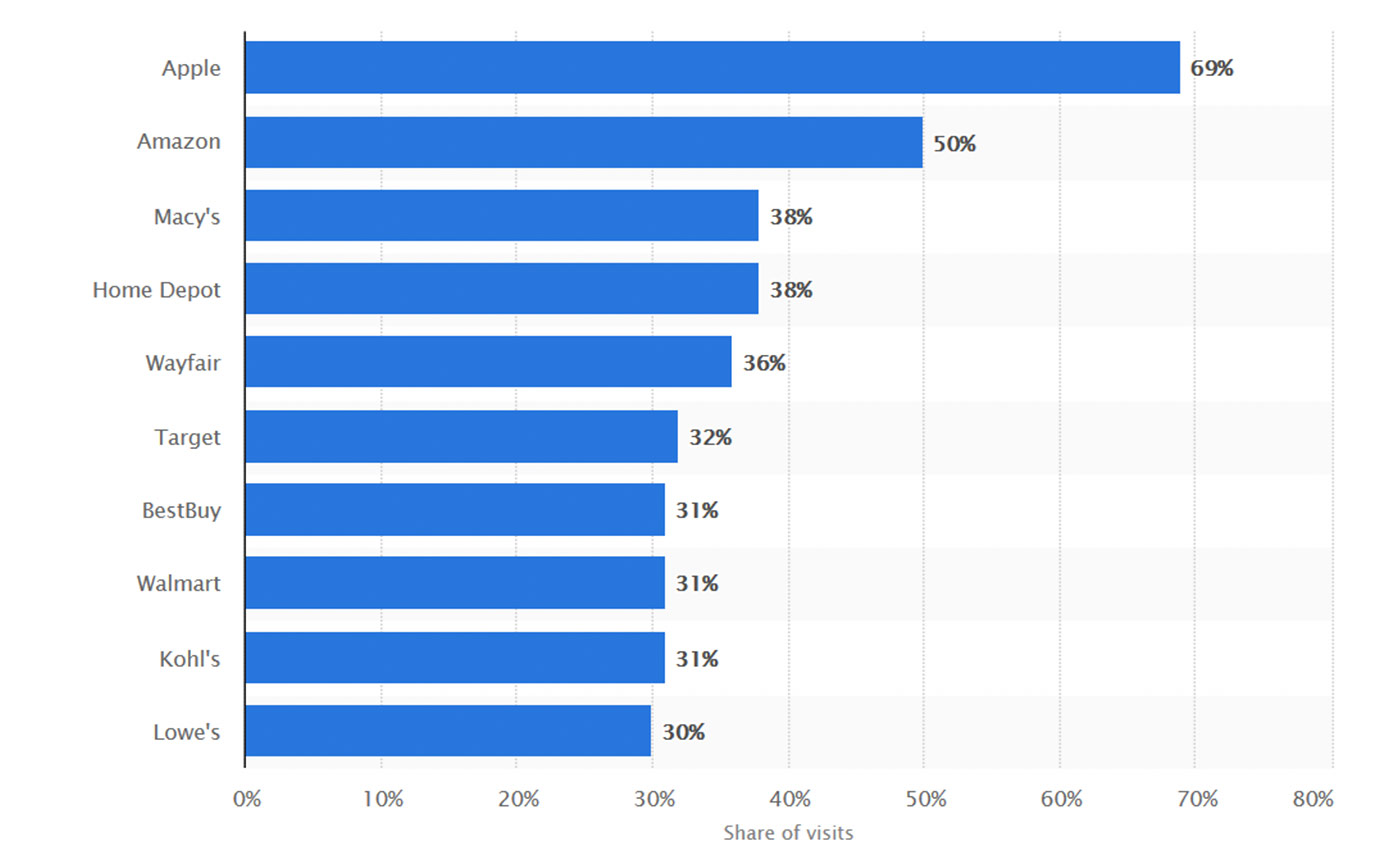
Two early holiday shopping trends appear to be emerging based on preliminary sales data, reports Reuters. While “Black Friday store traffic and sales data [are] not necessarily grim as consumers continue to spend,” online sales were the clear winner.
Reuters says the data indicates (1) online sales were up 19.6% on Black Friday to $7.4 billion and up 14.5% to $4.2 billion on Thanksgiving; and (2) there was a trend toward more Thanksgiving evening shopping, with physical store traffic up 2.3% year-over-year—but down 6.2% on Black Friday.
According to research and data analytics firm Statista, the overall 2019 holiday season for retail sales looks to continue the trend for steady annual increases since 2008–2009. The increase for brick-and-mortar retailers is expected to be about 4%. Statista wrote recently,
“In 2019, holiday retail sales in the United States were forecast to amount to about $729.3 billion. Holiday retail sales have risen substantially since the turn of the century, with holiday retail sales amounting to approximately $400 billion back in 2000. … Holiday season e-commerce is also on the rise, with increasing numbers of retailers and consumers going digital.”

Source: Statista
The National Retail Federation (NRF) conducts an annual survey of consumers in October related to their shopping plans for the holiday season. This year’s survey found that “consumers say they will spend an average of $1,047.83 this holiday season, up 4 percent from the $1,007.24 they said they would spend last year. … Shoppers between the ages of 35 and 44 plan to spend the most at $1,158.63.”
“Consumers are in good financial shape and willing to spend a little more on gifts for the special people in their lives this holiday season,” NRF President and CEO Matthew Shay said. “Retailers are fully prepared to meet the needs of holiday shoppers looking for that perfect mix of sales, quality and selection.”
Shay also noted that “retailers are expected to import near-record volumes of merchandise ahead of the tariffs that are scheduled to take effect on a wide range of consumer goods from China on December 15.”
Statista added perspective on the prospects for online shopping for the 2019 season:
“In 2018, holiday season retail e-commerce spending in the United States amounted to $119.5 billion, with the most money being spent online on Cyber Monday. That year, Cyber Monday became the biggest U.S. online shopping day ever with close to $7.9 billion in online spending. In 2019, U.S. holiday season e-commerce spending is projected to surpass $135 billion.
“The five days across the Thanksgiving weekend, also known as Cyber 5, are projected to account for the biggest online sales days of the holiday season: according to preliminary forecasts, the 2019 Cyber 5 online sales revenue will amount to an estimated $27.5 billion. … Holiday shoppers have also increased their smartphone use—in 2018, smartphones accounted for 30 percent of holiday season e-commerce revenue in the United States and mobile devices are important tools for shoppers.”

Source: Statista
It is expected that visits to retail websites via mobile devices will grow further in 2019. CNBC reports that “Cyber Monday shoppers spent a record $9.4 billion online, up 19.7% from a year ago, according to data released by Adobe Analytics.” For companies with a technology heritage such as Apple and Amazon, mobile visits to their websites in 2018 were far greater as a percentage than those for more traditional retailers.

Source: Statista
